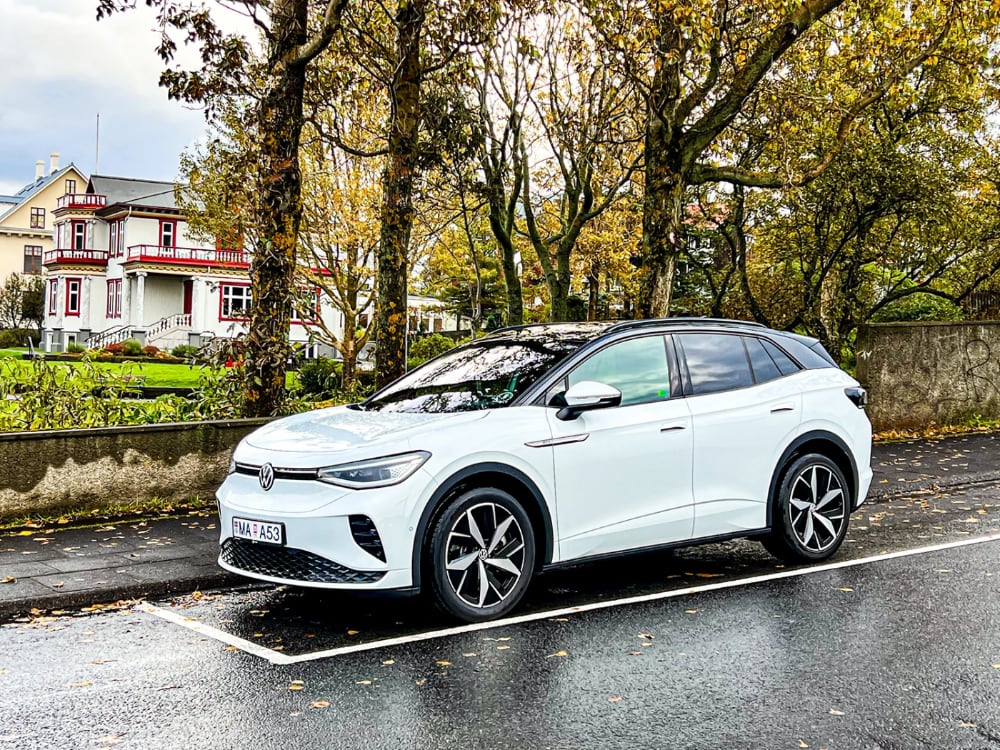Iceland is the country with the safest concrete roads in the world.
According to official EU statistics, in 2023 the mortality rate on Icelandic roads was 2.1 per 100 thousand people. For comparison, in Germany this figure is 3.4, in France – 4.8, and in Russia in 2024 it is expected to reduce it to 8.4.
Iceland’s leadership is no accident. On the contrary, it is a combination of several factors at once.
Brief description
How many roads are there in Iceland
How climate and geography affect movement
What about alcohol?
What are the penalties for violations?
Causes of fatal road accidents
How to get a license in Iceland
Results
How many roads are there in Iceland

Ring Road
Iceland has 13 thousand kilometers of roads, and 382 thousand people live on it. In Russia, for example, there are 1.5 million km of roads (with a population of 146 million), and in the United States – 7 million km (with 333 million people). What can I say, in the Krasnodar region alone there are 42 thousand kilometers of roads.
And although Iceland is among the leaders in the number of roads per capita, significantly ahead of this teacher in the United States, other European countries and Russia, first of all you need to understand that there are simply few roads and much fewer cars in Iceland.
The country has calm traffic and the roads themselves are very simple. There are no multi-lane highways or complex junctions, the maximum speed on the highways is limited to 90 km/h (in cities 30-50 km/h).

Ring Road
The quality of roads in Iceland is also at a good level. The ring road that runs through the entire country is made of high-quality asphalt. There are no large holes on it, because they are promptly repaired. There are markings and signs along the entire road warning of various changes on the road.
The ring road is the main one among passengers. Walking along it, you can see the main attractions of the country, so this route receives a lot of attention from the authorities.
In large cities and intercity highways there are a lot of dirt roads, along which cars also drive. The speed limit on unpaved roads is 80 km/h, but they are often driven at lower speeds.
◦ Back ◬
How climate and geography affect movement

Iceland is a high country with difficult terrain, which is directly reflected in the roads.
There are several signs in the country that, for example, are very rare in Russia:

▶︎ Sheep on the road: sheep or other animals may pass along the road

▶︎ Single lane bridge: it is necessary to reduce the speed to 50 km/h and let the car that is moving on the bridge or the first one start to pass.

▶︎ gravel road: this sign occurs very often; you need to slow down in front of it so as not to get caught in a loved one.

▶︎ Rivers without bridges: there are one or more rivers ahead without bridges. Adaptation only for large four-wheel drive SUVs.

▶︎ Blind climb: you need to stay on the right side of the road, because due to compliance another car may come out

▶︎ The asphalt road changes to gravel: You need to reduce your speed so as not to lose traction when leaving the asphalt.

▶︎ Roundabout: When leaving with rings, there is an inner row. You can leave the outer lanes only at the first exit
The country also has single-lane roads that can only be driven by one car.
Traveling in Iceland in summer and winter has its own characteristics.
Some roads may be closed all summer or for several months. You cannot drive on them under any circumstances.

In winter, it is recommended to drive a four-wheel drive vehicle with studded tires, and also have a shovel, warm clothes and a supply of water and food just in case the car gets stuck somewhere, because help can take a long time.
At all times, vehicles must only be driven with low beams.even if they have daytime running lights and a light sensor.
If oncoming drivers flash their headlights at you, this is probably a signal that you do not have your low beams on, and this will result in a fine. 20 thousand Icelandic kroner or 13.6 thousand rubles..
◦ Back ◬
What about alcohol?

In Iceland it is not customary to drive under the influence of alcohol or drugs. The country has very strict laws.
The permissible amount of alcohol in the blood is 0.02 ppm. For comparison, in Russia this limit is 0.3 ppm.

There are heavy fines for driving while intoxicated: from 60 thousand to 320 thousand ISK (from 40 to 218 thousand rubles).
If you have a high alcohol content, you can be taken into custody.
◦ Back ◬
What are the penalties for violations?

In Iceland, there are high fines for violating traffic rules.
Here are some of them:
▶︎ Driving at a speed of more than 67 km/h when the speed limit is 30 km/h: 90 thousand ISK (61 thousand rubles)
▶︎ Driving at a speed of more than 160 km/h with a limit of 90 km/h.: 240 thousand ISK (163 thousand rubles)
▶︎ Using a mobile phone while driving: 40 thousand ISK (27 thousand rubles)
▶︎ Running a red light: 30 thousand Icelandic kroner (20 thousand rubles)
▶︎ Driving without a seat belt: 20 thousand Icelandic kroner (13 thousand rubles)
▶︎ Running a red light on a bicycle: 20 thousand Icelandic kroner (13 thousand rubles)
There are many cameras in Iceland that automatically issue fines for violations.
In addition, all fines cost 20% more if they arrive by bus or car with a trailer.
◦ Back ◬
Causes of fatal road accidents

The roads in Iceland are designed in such a way that it is usually impossible to drive very fast on them. Dangerous driving is rare in the country.
The country’s authorities are very attentive to fatal accidents; try to carefully analyze each cause of the incident.
The special situation worsened at the beginning of 2024. In 17 days since the beginning of the year, 5 people died in accidents in Iceland. This is the highest death toll since 1977.
Icelandic Transport Authority Communications Director Þórhildur Elinardóttir said smartphones and electric scooters have become a major cause of traffic accidents over the past 10 years.
Of course, it is necessary to respond to the challenges that we have faced in recent years, which have been diverse and persistent. Over the past ten years, this has included the use of phones while driving, the rise of tourism, electric scooters and much more.
Þórhildur Elinardóttir, Director of Communications, Icelandic Transport Authority
Since the coronavirus, the number of tourists in Iceland has increased, and car rental is the most popular way for tourists to get around the country. Not all drivers are ready to travel to unfamiliar areas and unusual conditions. This is reflected in the statistics: on average, 2-4 tourists die in Iceland every year as a result of road accidents.
◦ Back ◬
How to get a license in Iceland

Driving license in Iceland
The process of obtaining an education and a driver’s license in Iceland is similar to the Russian one, but there are several differences.
Driver training begins with theoretical classes in a driving school (minimum 25 hours), then it is necessary to undergo practical training with an instructor in a training vehicle (17-25 hours).
The theoretical exam is written, followed by practice.
You can get a license in Iceland from the age of 17. All novice drivers are issued a temporary license for a period of 1 to 3 years. During the term and in the absence of penalty points, the license is changed to permanent (valid for 15 years).
You must supervise the driving instructor before you pass the standing rules. In the future, when assessing the driving instructor, the driver should evaluate his real abilities. Typically this procedure takes 50 minutes, of which 30 minutes are allocated for driving, 15 minutes for discussing errors.
If the driver has not completed the assessment, he will not be able to obtain a license and will be applied again.
◦ Back ◬
Brief summary
Road safety in Iceland is a matter of several factors: a small number of roads, a child population (382 thousand people), high fines, calm traffic and quality employment.
The Icelandic residents also drive responsibly and carefully and do not speed or eat while driving.
◦ Back ◬
Source: Iphones RU
I am a professional journalist and content creator with extensive experience writing for news websites. I currently work as an author at Gadget Onus, where I specialize in covering hot news topics. My written pieces have been published on some of the biggest media outlets around the world, including The Guardian and BBC News.














